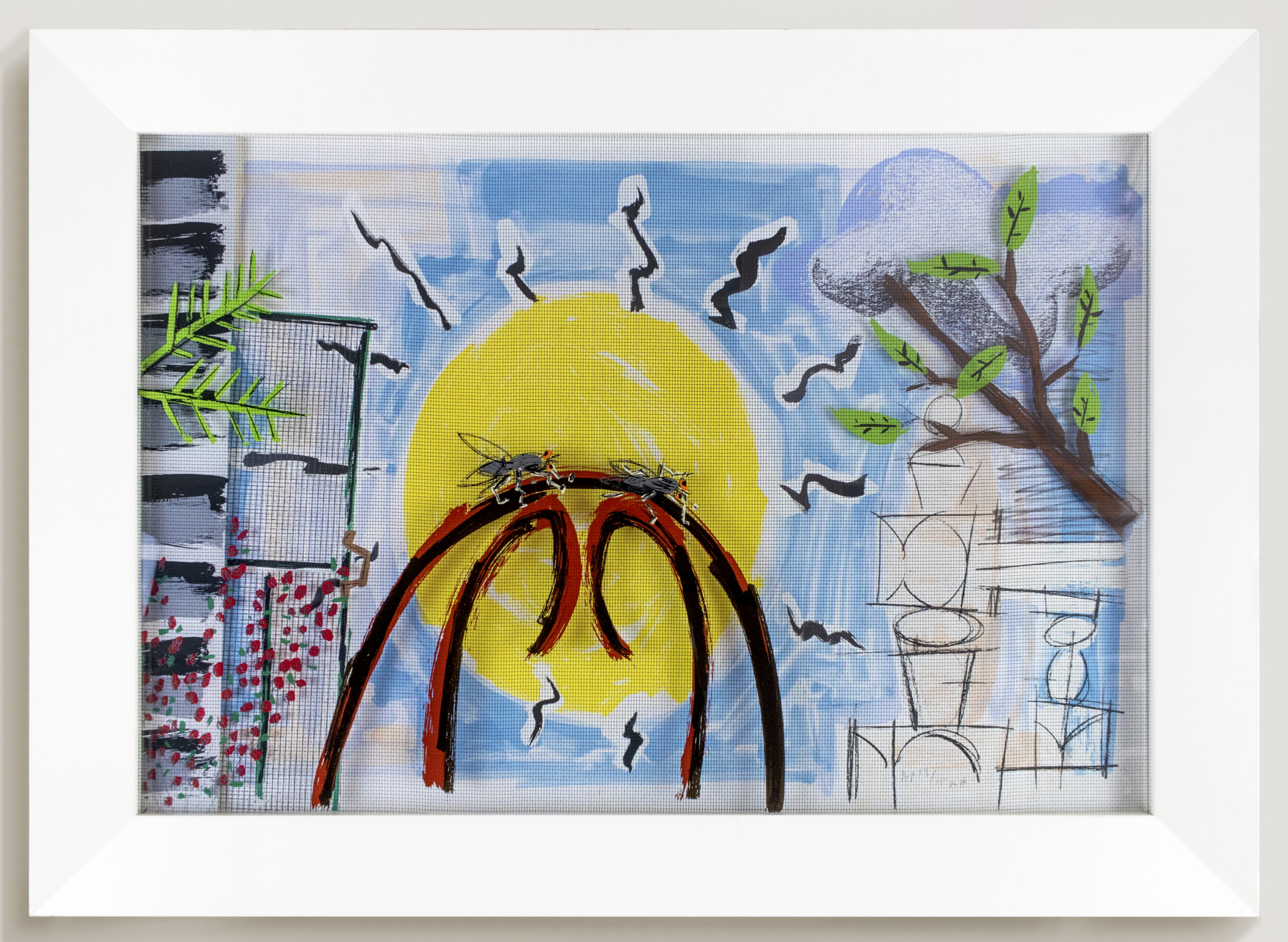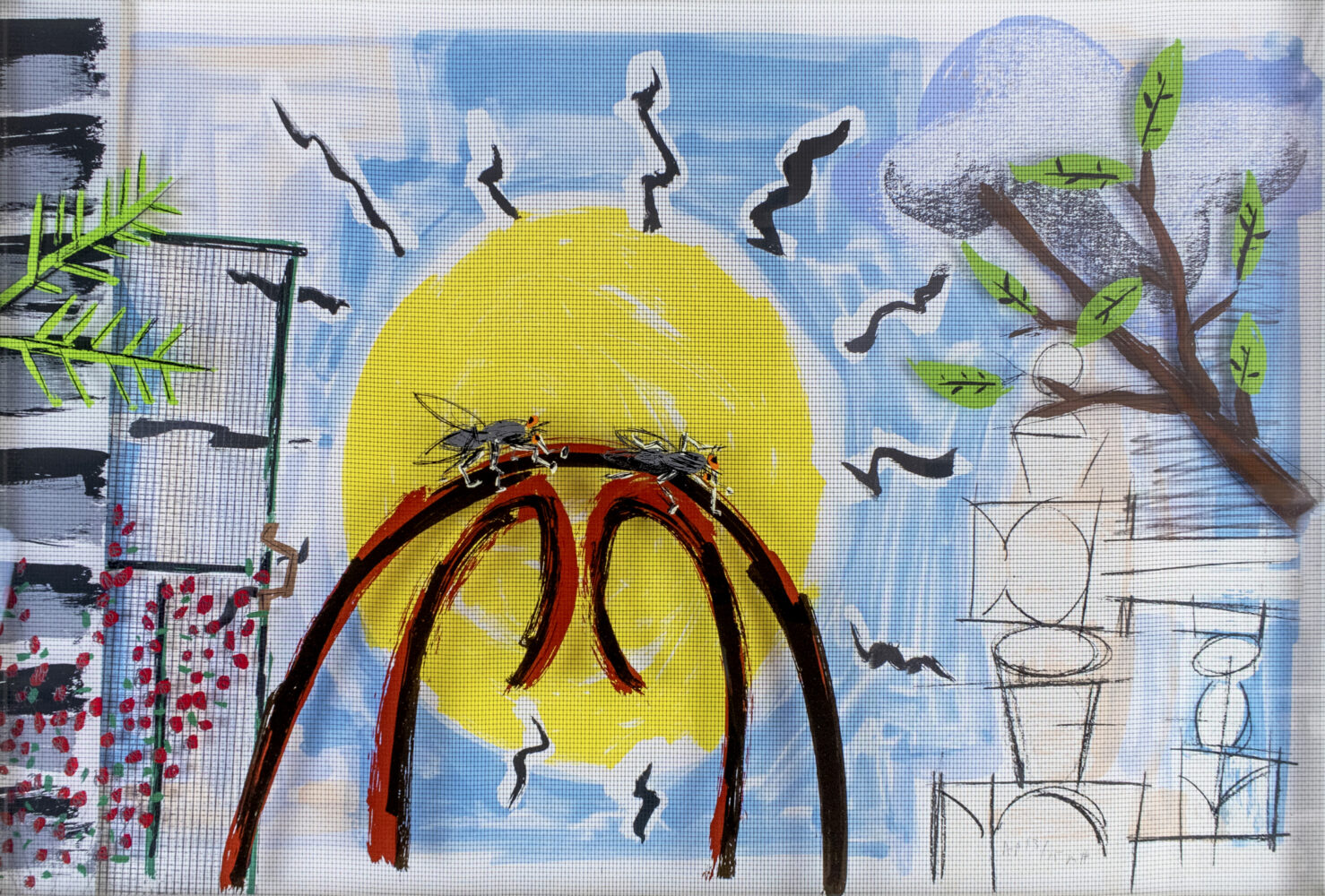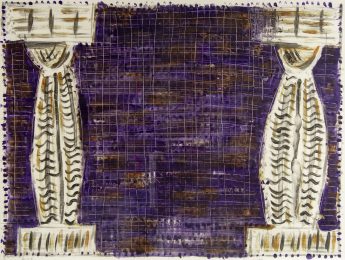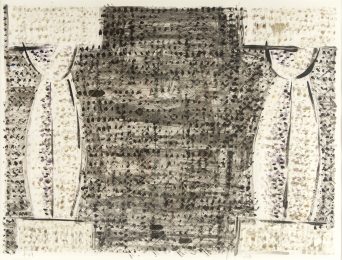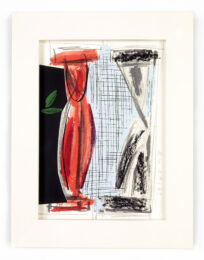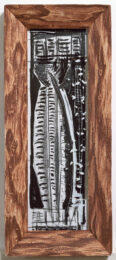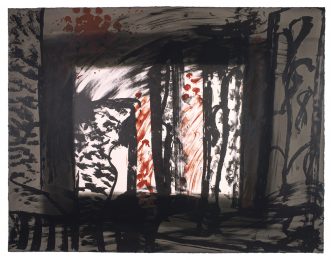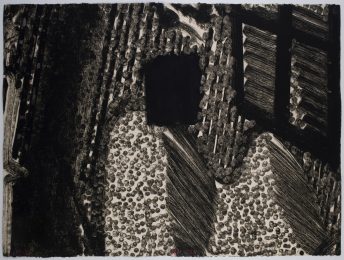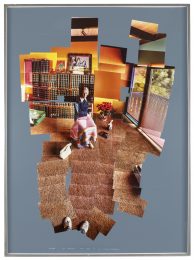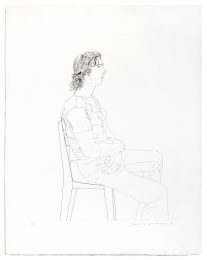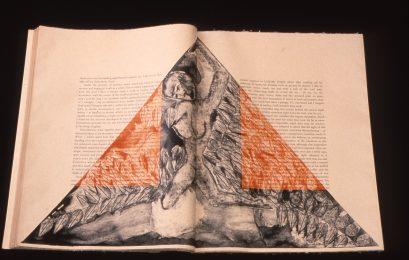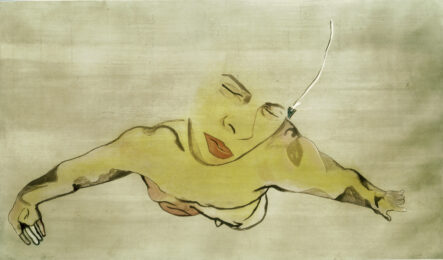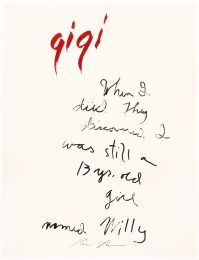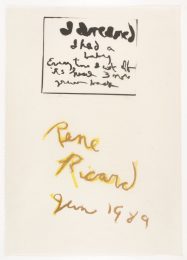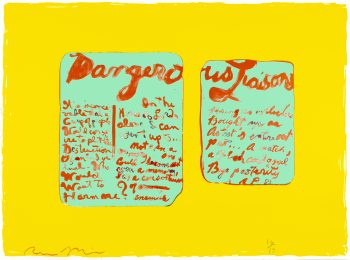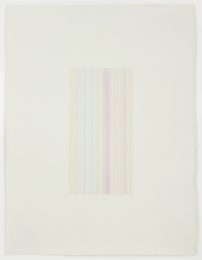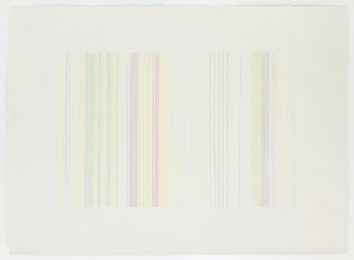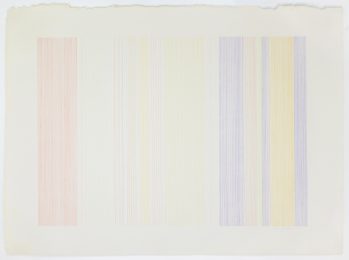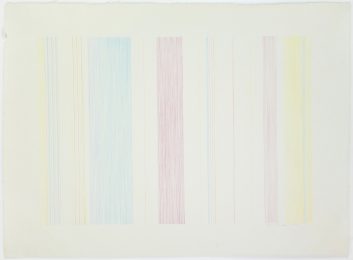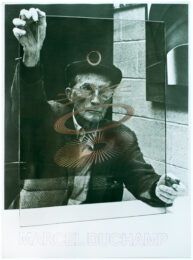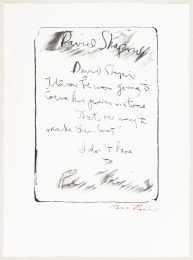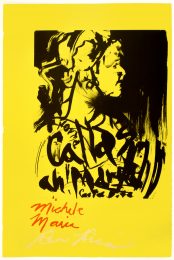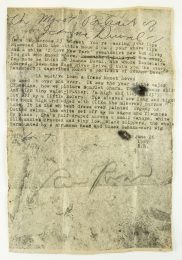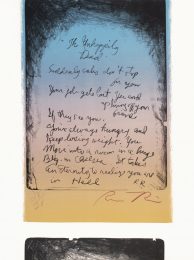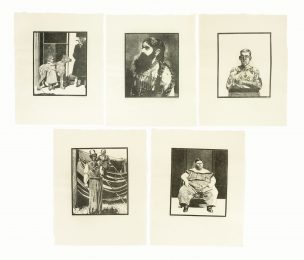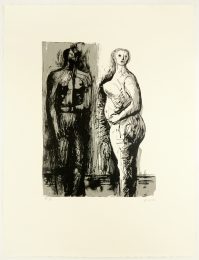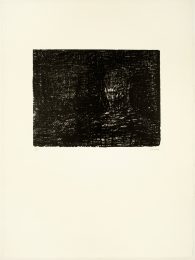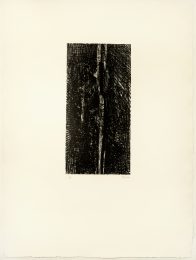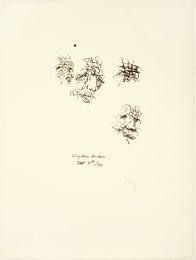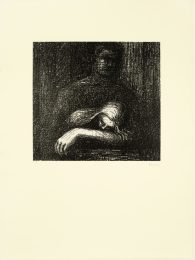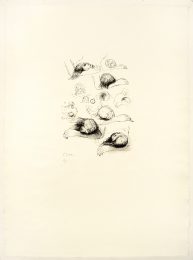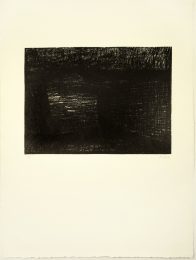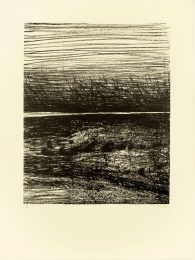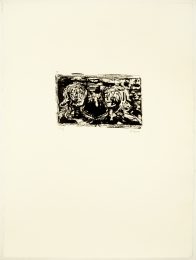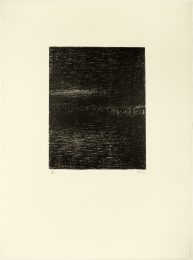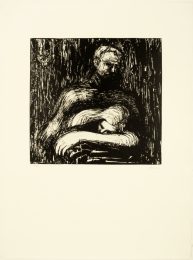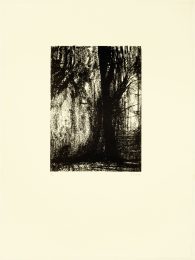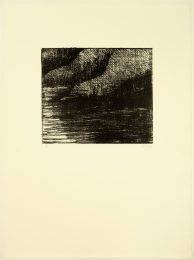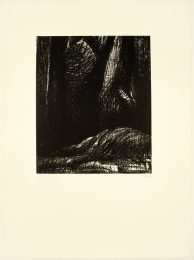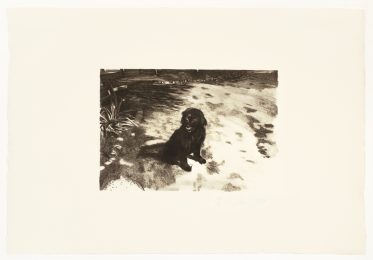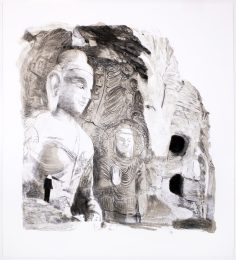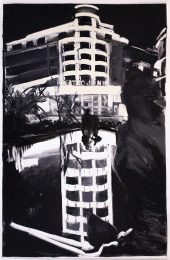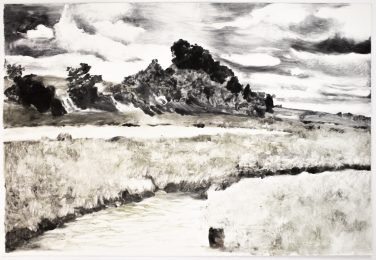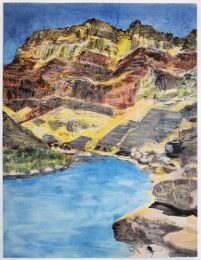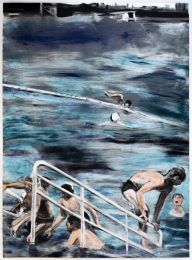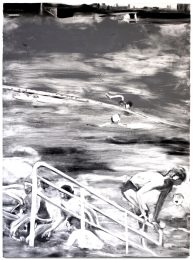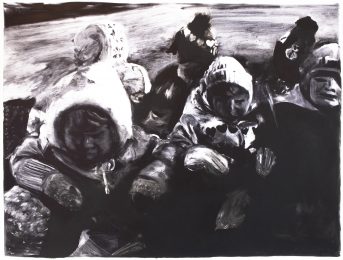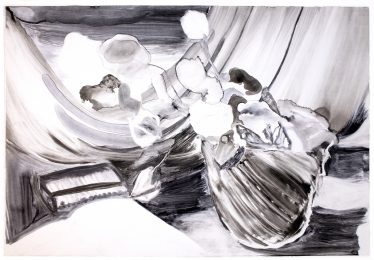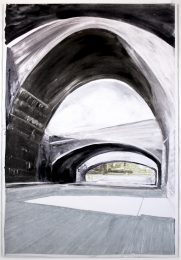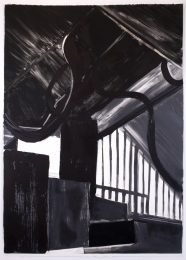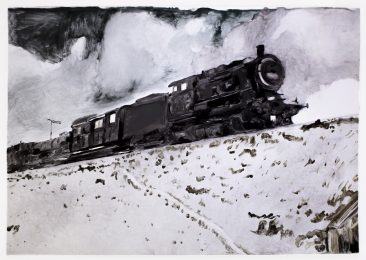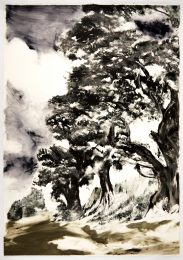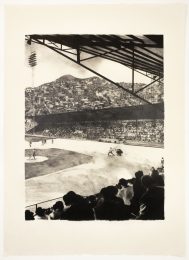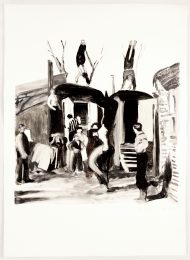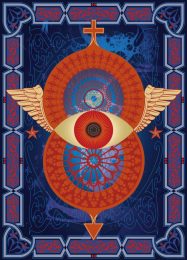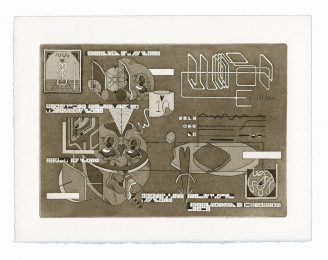Details — Click to read
Frame 27 x 35 x 2 in. / 68.5 x 89 x 5 cm
Two Flies on a Bentwood Chair by Michael Hurson. Lithograph on white paper with silkscreen on plexiglass, in a cream-colored lacquer frame. Edition 70: this impression 56/70. Signed by the artist with initials and numbered 56/70 in pencil lower right. Prepackaged and framed: ready to ship immediately, and ready to hang out of the box.
This mixed-media lithograph with silkscreen portrays the colorful scene of a lush, sun-drenched front porch. Hurson’s whimsical play on geometry and three-dimensionality is enhanced by the layers of plexiglass and paper upon which the image is printed. In the center of the composition, printed on the base layer of paper, a bright yellow sun sits atop a liquid, sky-blue background, and a jaunty, crayon-textured cloud. A porch door stands open, and to the right, a wash of translucent peach colors cubist forms drawn in black, resembling furniture, or perhaps Hurson’s characteristic columns, found in many of his drawings, prints, and monotypes. Whimsical flora floats above the first layer of this dimensional print, including a tree branch, bright green fern fronds, and a spray of red roses. To the left, an additional layer of paper abuts a screen door, upon which is printed the grey shingles of a wall. The layer of plexiglass closest to the viewer suspends two cartoonish flies, sitting atop the curved back of a bentwood chair, painted in bold brick-red and black brushstrokes.
Made by bending wood with steam, the bentwood chair is one of the first examples of minimalist modern design. Designed by German-Austrian cabinet maker, Michael Thonet, the chair was lightweight and economical, and quickly became a popular worldwide export. Thonet won a gold medal at the 1867 Paris World’s Fair, and the chair became a fashionable staple at cafés across Europe. In this work, the chair’s top becomes a calligraphic motif, curling beneath the flies’ scribbled bodies. Hurson points to the intimacy of domestic spaces by printing the grid of a screened window on both the paper, and the topmost layer of plexiglass, creating a pleasingly dizzying visual effect. This effect is typical of Hurson’s playful sense of humor: making the viewer gaze through a screen door to view this tranquil scene.
Hurson was a life-long theater aficionado, even writing and producing a surreal theater piece entitled ‘Red and Blue’ at the Public Theater’s Other Stage in 1982. The production featured two light bulbs engaged in humorous, philosophical dialogue. In Two Flies, the background’s layered planes of plexiglass act as the painted backdrop of a play. Hurson frequently paired anthropomorphic objects in his compositions: Here, the flies are pictured with red eyes and human-like appendages, suggesting a conversation between the two. The way the artist frames this composition with the side of a house on the left, and a tree on the right, mimics how theater sets achieve the effect of three dimensionality.
Packaging for this framed work measures 95 x 76 x 9 cm / 37.5 x 30 x 3.5 in. and weighs 11.3kg / 25lb.
A favorite of New York Times art critic Roberta Smith, Hurson drew with a stylish, satirical energy, imbuing everyday objects such as eyeglasses, pencils, and coat hangers with playfully mythological significance. Hurson’s witty, intentionally loose mark-making find a parallel to the style of Phillip Guston, with whom Hurson exhibited on numerous occasions.
Born in Ohio in 1941, and raised in Chicago, Michael Hurson earned a bachelor of fine arts degree from the Art Institute in 1963. Hurson came to prominence after he was included in the Whitney Museum of American Art’s 1978 “New Image Painting” exhibition. Including such artists as Jennifer Bartlett, Robert Moskowitz, Susan Rothenberg, and Joe Zucker, the exhibition was considered a landmark return to figuration.
Hurson often mined art history, experimenting with multi-planed compositions recalling the work of Cubist painters, and producing thoughtfully-sketched interpretations of famous masterpieces such as Georges Seurat’s “Sunday Afternoon on the Island of the Grande Jatte.”
Hurson’s work is represented in numerous public collections, including those of the Modern, the Whitney, the Art Institute of Chicago and the Walker Art Center in Minneapolis. He has been represented by Paula Cooper Gallery since 1982.

